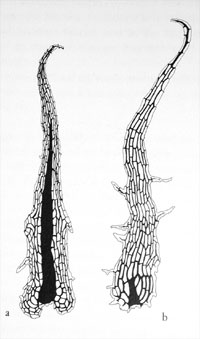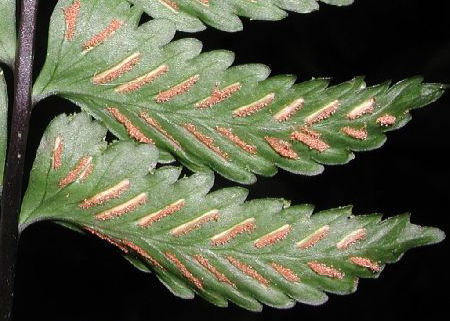|
Hardy Fern Home Asplenium resources
All Ferns � Aspleniaceae �� Asplenium
�Other Genera
|
| Asplenium | ||
Spleenwort | ||
|
Etymology
Greek: a, not + splen, the spleen. A totally confusing reference to the use of spleenwort to cure spleen and liver problems. The name originated with Pliny and Discorides.
Description
Rhizome: erect, scales clathrate.
Frond: evergreen, monomorphic or nearly so. vascular bundles: 2 C-shaped, back to back, uniting to 1 upwards to an X-shape. Blade: simple to 2-pinnate, commonly with tiny glandular hairs and a few linear scales. veins free. Sori: linear, indusium: thin, flap-like, covering sorus during maturation, on one side of the sorus.
Distinctive Characteristics
The stained-glass effect on rhizome scales is unique. The linear sorus along veins is characteristic.
|
|
|

Asplenium. Clathrate scales on the rhizome are universal for the genus, rarely found elsewhere. �Illustration from Scandinavian Ferns by Benjamin �llgaard and Kirsten Tind, Rhodos, 1993. |
